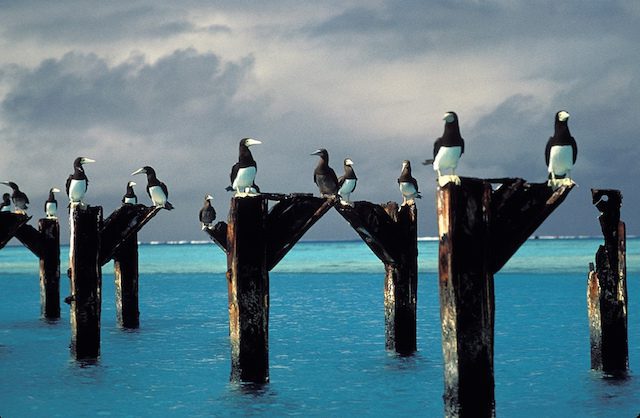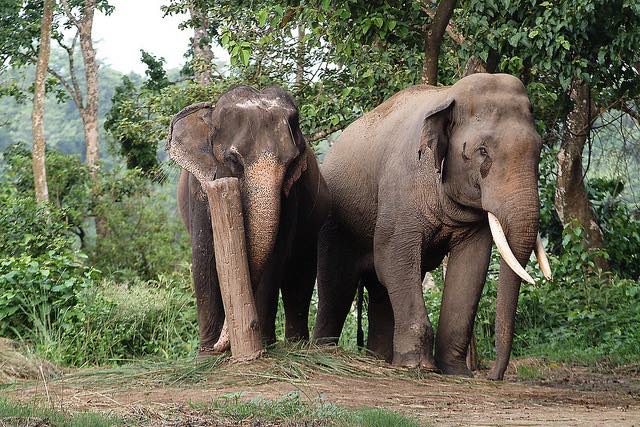 Thanks to conservation efforts from organizations like WWF and the David Suzuki Foundation, there were a number of recent wildlife success stories. The combined efforts of governments, organizations and individuals have succeeded in protecting the habitats of a number of species.
Thanks to conservation efforts from organizations like WWF and the David Suzuki Foundation, there were a number of recent wildlife success stories. The combined efforts of governments, organizations and individuals have succeeded in protecting the habitats of a number of species.
- One of the more comprehensive wildlife protection efforts is taking place in the UK, where advocates are trying to pass what is known as the Nature and Wellbeing Act. This is particularly prescient for the British isle, which has completely eradicated all of its indigenous big animals. The Nature and Wellbeing Act is an ambitious piece of legislation being promoted by Wildlife Trusts and the RSPB. It seeks to bring about the recovery of nature in a generation.
- On January 28th an amendment was defeated that would have undermined the Antiquities Act. This act protects natural and historic landmarks including America’s most iconic lands like Grand Canyon National Park.
- Early this year, President Obama announced his intention to protect more than 12 million acres in Alaska’s fragile Arctic National Wildlife Refuge (ANWR). This would protect the land from oil and gas drilling and help conserve caribou, polar bears, marine life, as well as countless species of birds and fish. If the President heeds a U.S. Fish and Wildlife recommendation, this may be followed up by protections for four adjacent rivers (the Atigun, Kongakut, Marsh Fork Canning, and Hulahula).
- As reported in a Huffington Post article, a number of new parks and species protections came into being in 2014. President Obama created the world’s largest fully protected marine reserve in the central Pacific Ocean by expanding the Pacific Remote Islands’ National Marine Monument from 87,000 square miles to more than 490,000 square miles.

- The passage of the National Defense Authorization Act will help safeguard hundreds of thousands of acres in two critically important wild lands in Montana, the Rocky Mountain Front and the North Fork of the Flathead River.
- The WWF has also been behind a number of wildlife success stories including the protection of the Northern Great Plains (NGP). After more than 30,000 WWF members and supporters reached out to their Congressional representatives, Congress took steps to protect 180 million acres of the NGP, which stretches across five states.The NGP is home to a wide diversity of wildlife. In 2014 the US Congress passed the Farm Bill, a piece of legislation that plays a critical role in conserving America’s grasslands, protecting native species, and preserving a rural way of life. The Farm Bill protects the NGP from threats such as grassland plow-up and habitat fragmentation.
- Through the efforts of the Amazon Region Protected Areas (ARPA) initiative, WWF succeeded in protecting portions of the Amazon rainforest.
- The Government of Gabon announced that it would create a new marine protected area covering more than 18,000 square miles.
- The Government of Bangladesh created the country’s first marine protected area, which will afford protections to whales, dolphins, sea turtles, sharks, and other oceanic species.
- Four million acres of Argentina’s Peninsula Valdes was declared a Biosphere Reserve by UNESCO. This incorporates legal protections for a wide range of wildlife including southern right whales, Magellanic penguins, elephant seals, flightless Darwin’s rheas, and guanacos.
- WWF partnered with global leaders through the Alliance for Water Stewardship (AWS) to promote the use of freshwater in a way that is socially, economically and environmentally beneficial. This will help protect valuable freshwater resources and all the animals that depend on them for their survival.
- The WWF is leading a global campaign to stop wildlife crime, which threatens a number of species. Last February, the Obama Administration unveiled its first-ever National Strategy for Combating Wildlife Trafficking, a plan that will strengthen enforcement to fight wildlife crime; reduce consumer demand for illegal animal products; and build international cooperation to end the violence. In London, a total of 46 countries signed on to measures that will help tackle the crisis.
- WWF also helped protect the oceans from illegal fishing by supporting a US government national strategy to address black market fishing
- WWF has supported wildlife conservation in Nepal for more than 50 years. They currently have nearly 100 local staff and many partners in Nepal working to put an end to poaching. Their efforts seem to be paying off as no rhinos, elephants or tigers were poached for a 365 day period. This is the second time since 2011 that Nepal has had a year free of poaching.

- Last February, U.S. President Obama, Mexican President Nieto, and Canadian Prime Minister Harper committed their nations to creating a task force to protect the monarch butterfly, which migrate across these three nations.
- By planting milkweed, the monarch’s primary foodsource, the David Suzuki Foundation helped to pull the Monarch back from the brink. This is but one of the Suzuki foundations wildlife success stories.
- Despite the anti-wildlife activities of the Canadian government, there were a number of other Canadian wildlife success stories achieved in part through the efforts of the David Suzuki foundation. Demonstrations in Quebec managed to dissuade TransCanada pipelines from building the Energy East fossil fuel pipeline in critical Beluga habitat.
- Parts of the world are beginning to get serious about protecting bees. Neonicotinoid pesticides, which are deadly to bees and other creatures, were restricted by the provincial government in Ontario. The European Union banned three neonicotinoids for “crops attractive to bees” and the White House issued a Presidential Memorandum on pollinator health to the heads of federal agencies requiring action to, “reverse pollinator losses and help restore populations to healthy levels.”
- Defenders of wildlife is an organization that has documented a number of wildlife success stores. Along with their partners, they recently used the courts to make the federal government protect critical habitat for Right Whales.
- There were also agreements to help protect red wolves and federal protections were reinstated for gray wolves in Wyoming.
- Working with local advocates and conservation allies, Defenders’ staff helped protect critical habitat for imperiled wildlife from a construction project in Florida.
- 22, Last year, five species of shark and two species of manta ray officially gained international protection.
- Last July, a federal court has upheld Cape Hatteras’ National Seashore beach driving rule, which helps to protect the habitat of sea turtles and piping plovers.
- Also in July, prairie dogs were restored to Thunder Basin National Grassland, laying the foundation to bring back other endangered species.
- American and Canadian indigenous peoples are working together to restore the Bison in the U.S.
- In Nicaragua, there was a dramatic increase in nesting of critically endangered hawksbill sea turtles. A total of 21 species of sharks and rays were afforded protections under the Appendices of the Convention on Migratory Species (CMS).
- There was also an agreement to grant strict protection to the reef manta, nine species of devil rays, and five species of sawfishes.
- Conservation efforts extend all the way to conflict ridden Afghanistan, where the government established a national park in the Wakhan District. This move will protect snow leopards, Marco Polo sheep, lynx, Himalayan ibex, urial and even the Kashmir musk deer, which was recently spotted for the first time since 1948.
- Perhaps the greatest wildlife success story concerns tigers. WWF worked with governments, research institutions and local communities in the Terai Arc Landscape (a transborder area shared by India and Nepal) to track the status of tigers. The conservation efforts of WWF and others have helped to increase India’s tiger population by nearly 30 percent in just four years.
- Of all the success stories, none is more endearing than the return of baby tortoises on the Galapagos island of Pinzón. This is the first time that baby tortoises were spotted on the island in more than 100 years. These tortoises were almost completely wiped out by human activity (the introduction of rats which ate the tortoises’ eggs).

What these hopeful stories tell us is that while human activity has exterminated species at an alarming rate, we are also capable helping wildlife by reversing some of the damage we have caused.
——————-
Richard Matthews is a consultant, eco-entrepreneur, green investor and author of numerous articles on sustainable positioning, eco-economics and enviro-politics. He is the owner of The Green Market Oracle, a leading sustainable business site and one of the Web’s most comprehensive resources on the business of the environment. Find The Green Market on Facebook and follow The Green Market’s twitter feed.
Image credits: U.S. Fish and Wildlife Service, Knut-Erik Helle, Island Conservation, courtesy flickr


